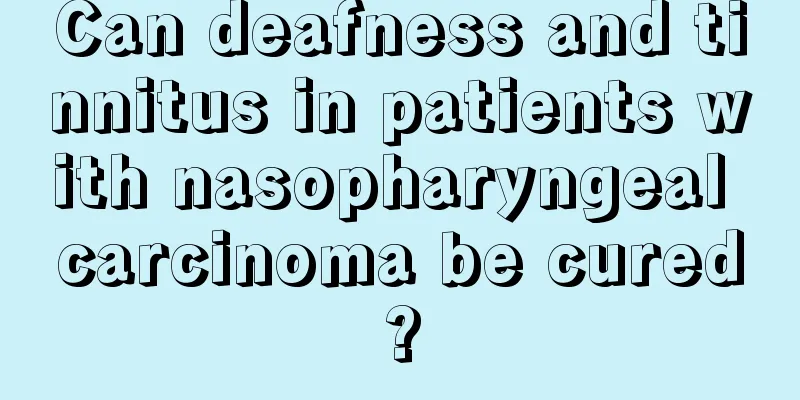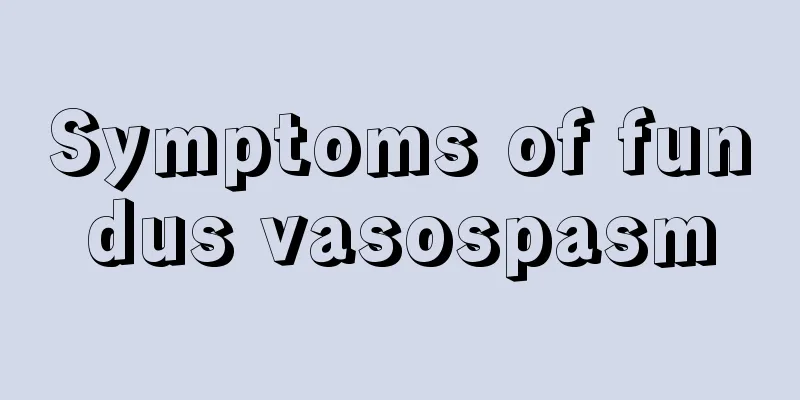Depression syndrome

|
Wolff-Parkinson-White syndrome is a very common health problem and also a heart problem. For patients with preexcitation syndrome, they must monitor their health status in a timely manner. If any adverse physical phenomena occur, they need to go to the hospital for examination as soon as possible, and cooperate with the doctor for treatment if necessary. Below, we will introduce you to the relevant knowledge of preexcitation syndrome in detail! 1. Introduction to the disease Preexcitation is an abnormal phenomenon of atrioventricular conduction. The impulse is transmitted through the accessory pathway, prematurely exciting part or all of the ventricles and causing premature excitation of some ventricular muscles. People with pre-excitation phenomenon are called pre-excitation syndrome or WPW (Wolf-Parkinson-White) syndrome, which is often accompanied by supraventricular paroxysmal tachycardia. Preexcitation is a rare arrhythmia, which is mainly diagnosed by electrocardiogram. 2. Symptoms Simple preexcitation is asymptomatic. Concurrent supraventricular tachycardia is similar to general supraventricular tachycardia. For patients with atrial flutter or atrial fibrillation, the ventricular rate is mostly around 200 beats/min. In addition to discomfort such as palpitations, shock, heart failure and even sudden death may occur. When the ventricular rate is extremely fast, such as 300 beats/min, the heart sounds detected by auscultation may be only half of the ventricular rate on the electrocardiogram, indicating that half of the ventricular excitation cannot produce effective mechanical contraction. Treatment Preexcitation itself does not require specific treatment. When concurrent supraventricular tachycardia occurs, the treatment is the same as general supraventricular tachycardia. When atrial fibrillation or atrial flutter occurs, if the ventricular rate is fast and accompanied by circulatory disorders, synchronized direct current cardioversion should be used as soon as possible. Lidocaine, procainamide, propafenone, and amiodarone slow conduction along the accessory pathway, which can slow the ventricular rate or convert atrial fibrillation and flutter to sinus rhythm. Digitalis accelerates conduction along the accessory pathway, while verapamil and propranolol slow down conduction within the atrioventricular node, both of which may significantly increase the ventricular rate or even develop into ventricular fibrillation, so they should not be used. If supraventricular tachycardia, atrial fibrillation or atrial flutter occurs frequently, it is advisable to take the above-mentioned antiarrhythmic drugs orally for a long time to prevent attacks. For patients who cannot be controlled by drugs, whose electrophysiological examination confirms that the refractory period of the bypass pathway is short or is shortened during rapid atrial pacing, or whose ventricular rate reaches about 200 beats/min during atrial fibrillation, there are indications for electrical, radiofrequency, laser or cryoablation after positioning, or surgical severance of the bypass pathway to prevent attacks. If the electrocardiogram shows normal QRS waves, regular PR intervals, and a heart rate of about 200 beats/min, repetitive tachycardia should be considered. Its treatment is the same as that of general supraventricular tachycardia. Verapamil, quinidine, ATP or digitalis can be used. If the QRS complex is abnormal and the RR interval is significantly irregular, pre-excitation combined with atrial fibrillation should be suspected. In this case, quinidine, procainamide, or quinidine and propranolol should be used in combination. Verapamil, digitalis and ATP are prohibited because the latter three can shorten the refractory period of the bypass pathway and accelerate conduction of the bypass pathway, and even cause ventricular fibrillation. For patients with frequent episodes of supraventricular tachycardia and obvious symptoms, electrophysiological examination should be performed to identify the location of the accessory pathway and then electrical ablation, radiofrequency ablation, or surgical treatment should be used. |
<<: Normal pulse pressure value
>>: What's wrong with my itchy heart
Recommend
How long can one live with advanced bone cancer
Survival time for patients with advanced bone can...
What are some tips for sun protection in summer
Many women are reluctant to go out in the summer ...
The best way to reduce wrinkles
As people age, wrinkles are an avoidable facial p...
How much does it cost to professionally treat uterine cancer
When women are about to start enjoying a comforta...
Common complications of esophageal cancer
During the development of esophageal cancer, espe...
How to prevent laryngeal cancer in life
Many people will lose their precious lives due to...
What are the effects and uses of Hehesen tea
Hehesen tea is a kind of tea that nourishes the i...
How should kidney stones be treated?
Kidney stones are a relatively common urinary sys...
What to do if there are small flying insects in the bedroom
Many insects are common in our daily lives, such ...
Is it harmful to drink water soaked with Albizia Julibrissin
Soaking the flowers of Albizia Julibrissin in wat...
Is it better to have more or less pubic hair?
In life, whether it is men or women, there will b...
How long can you live after ovarian cancer surgery
When it comes to ovarian cancer, many women will ...
How to treat early breast cancer
How is early breast cancer treated? Breast cancer...
The dangers of eyelash extensions
Women often perform some eye care and reshaping t...
Is radiotherapy for brain cancer useful?
Radiotherapy for brain cancer is also effective, ...









